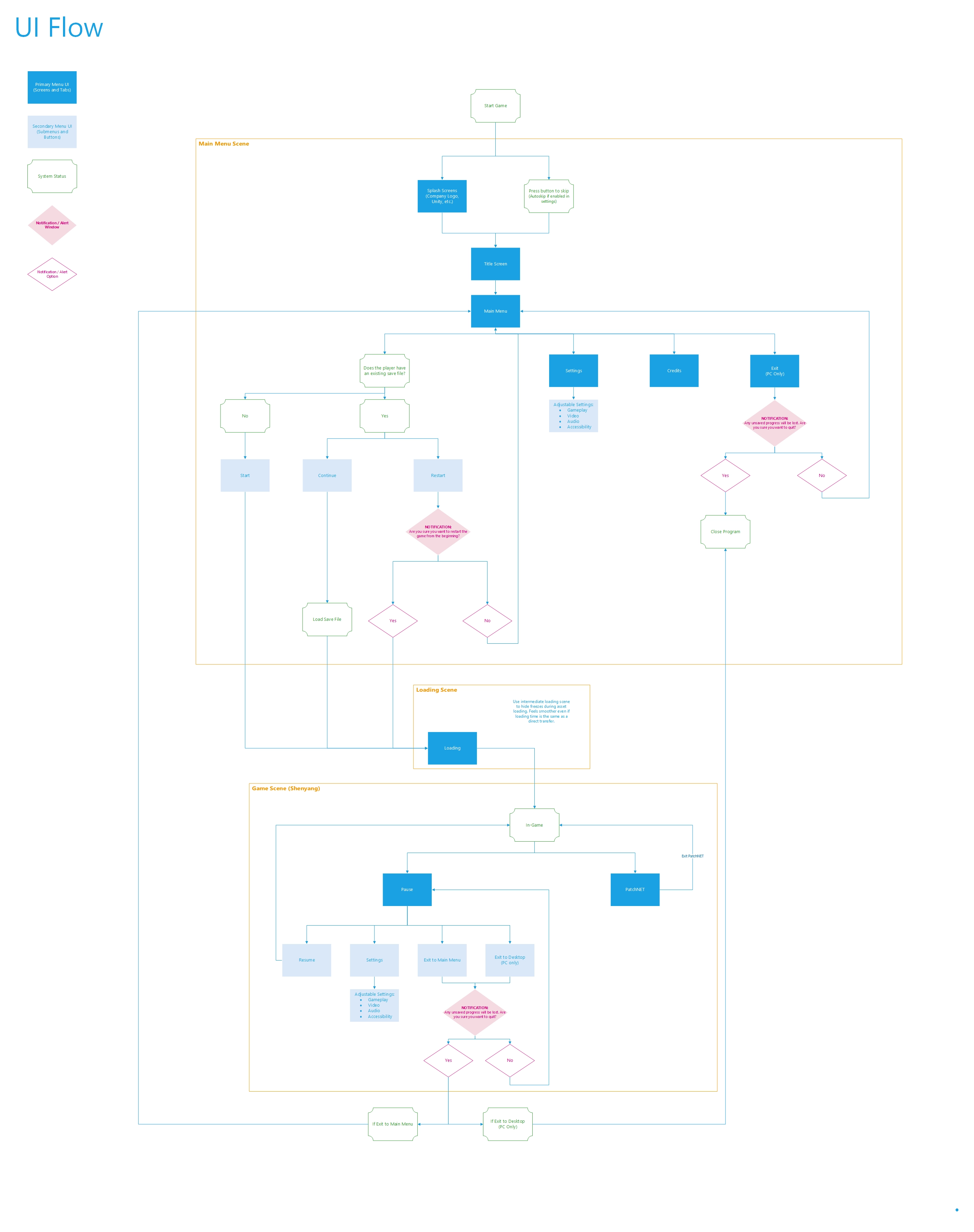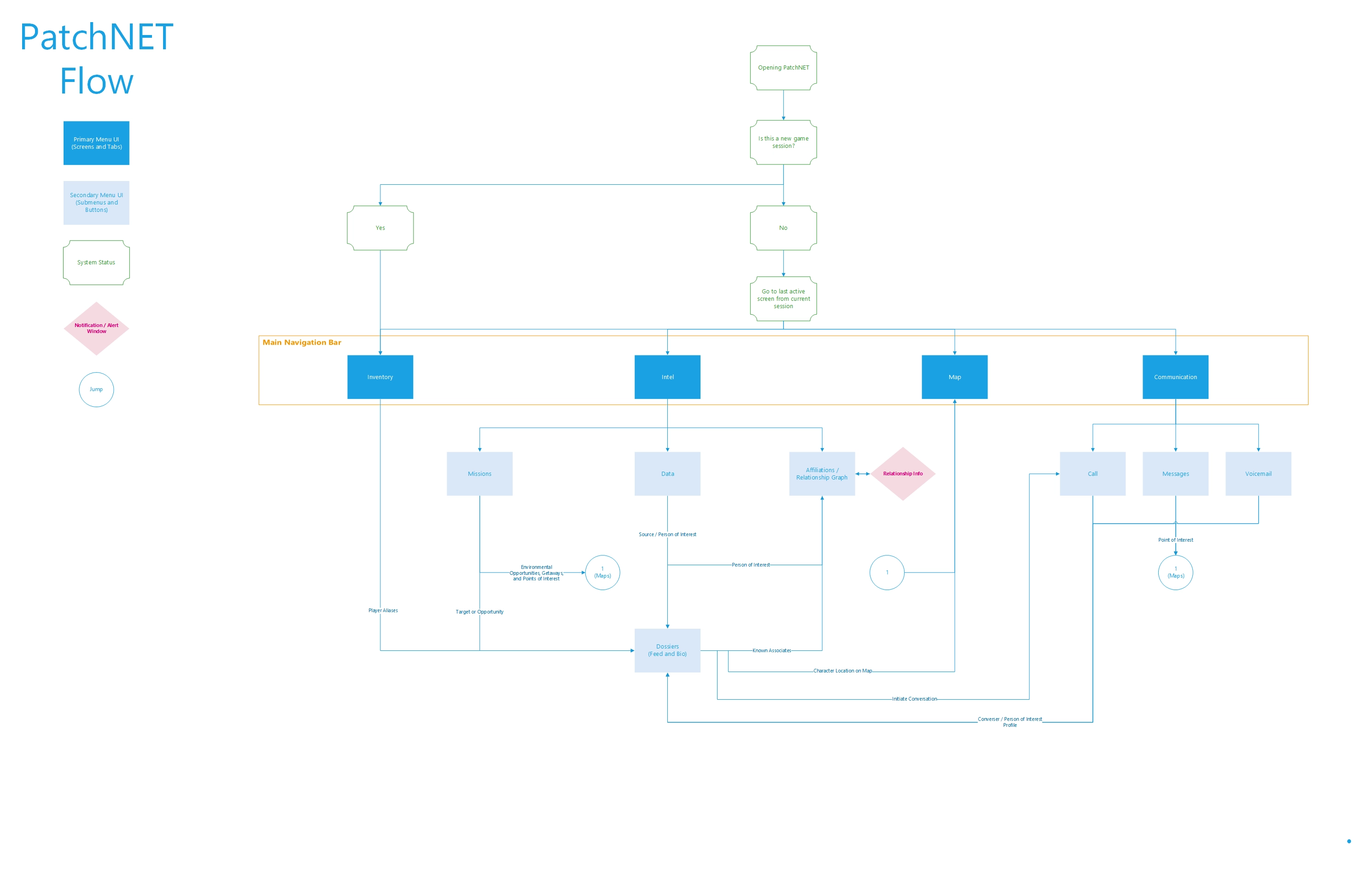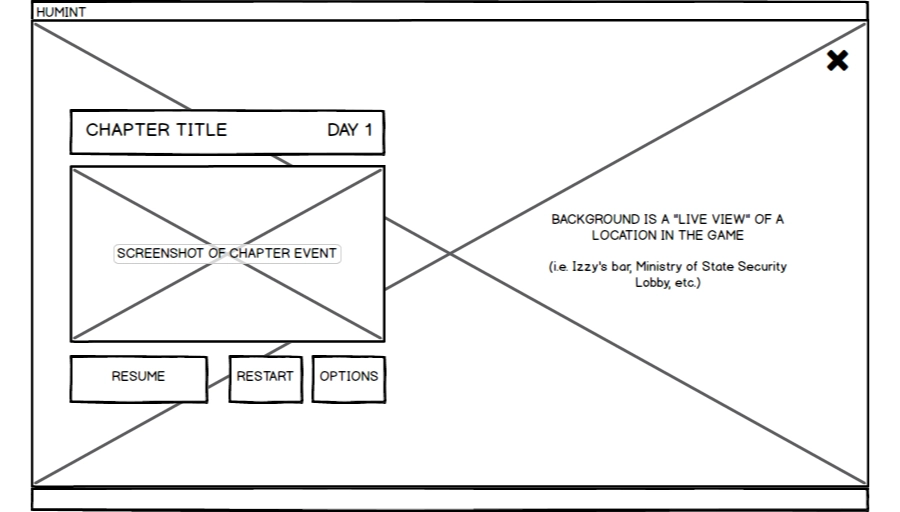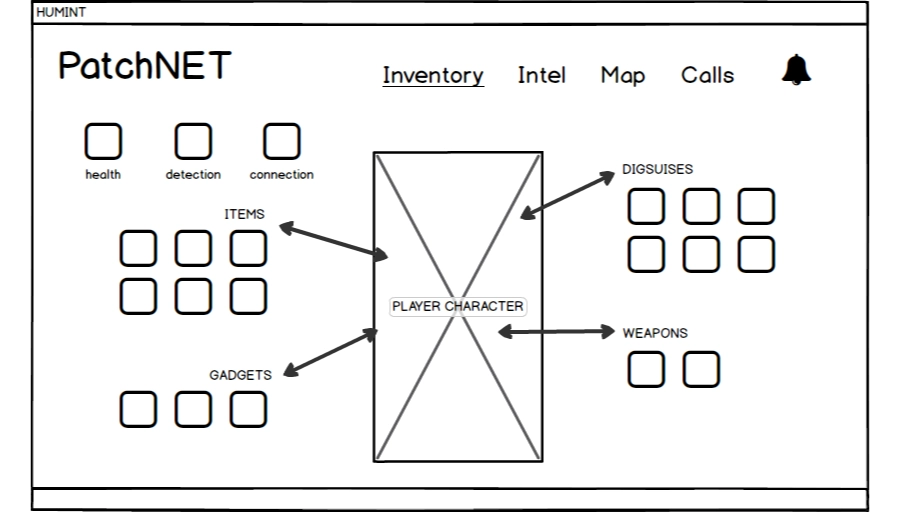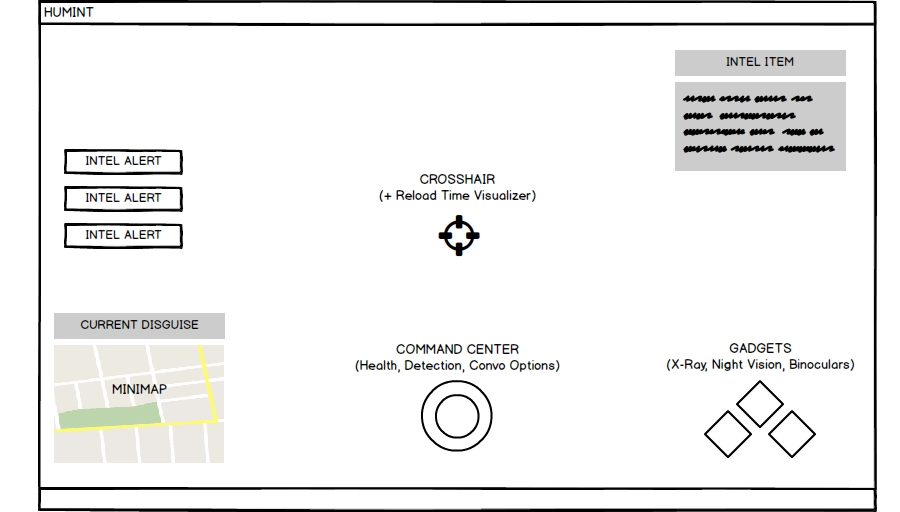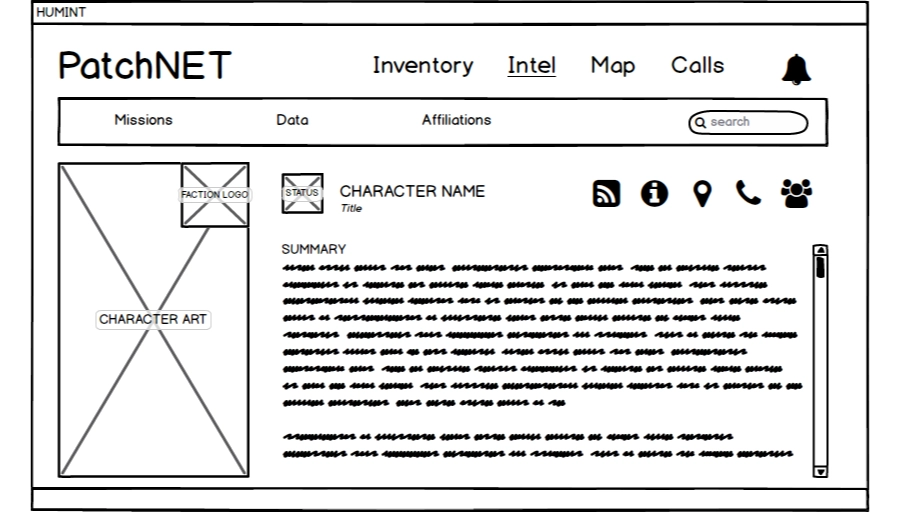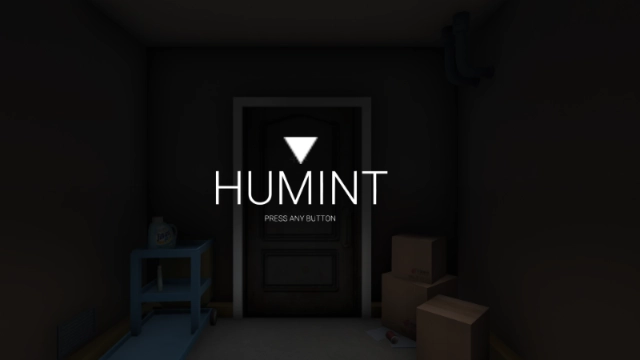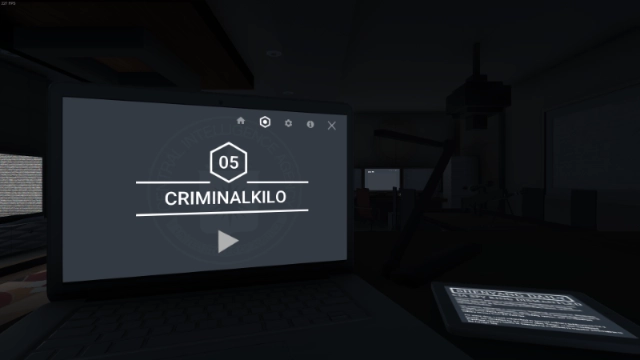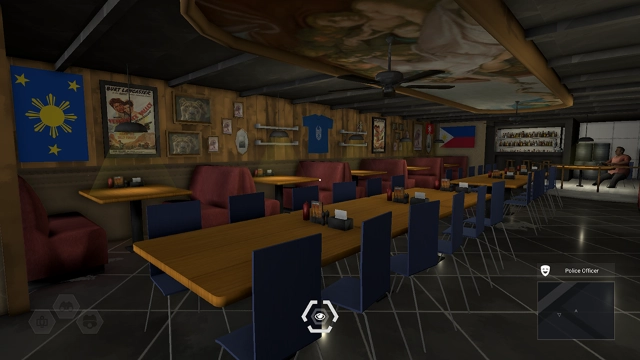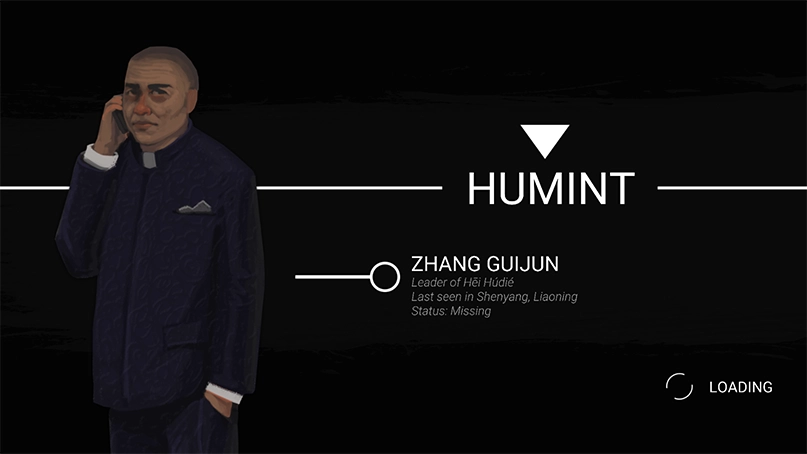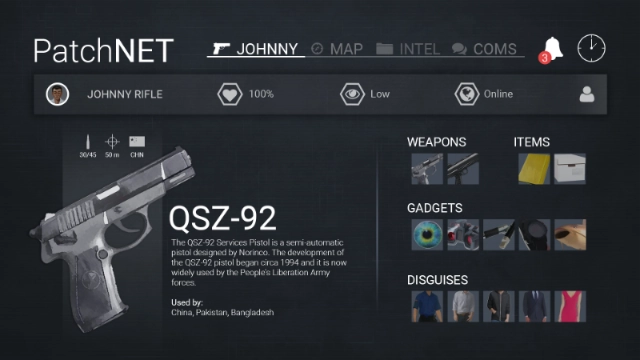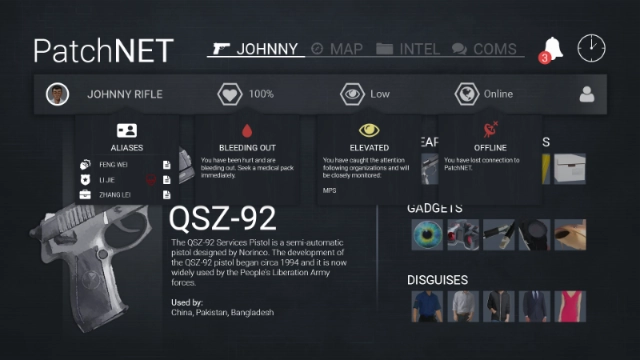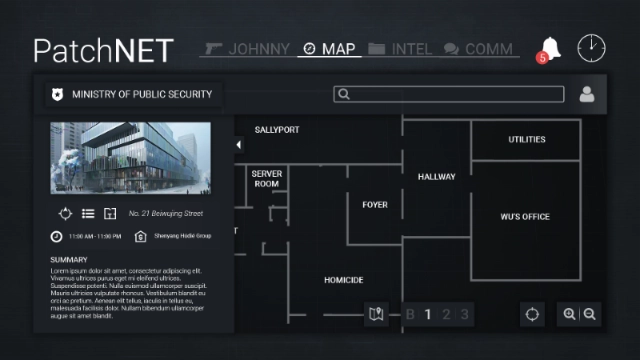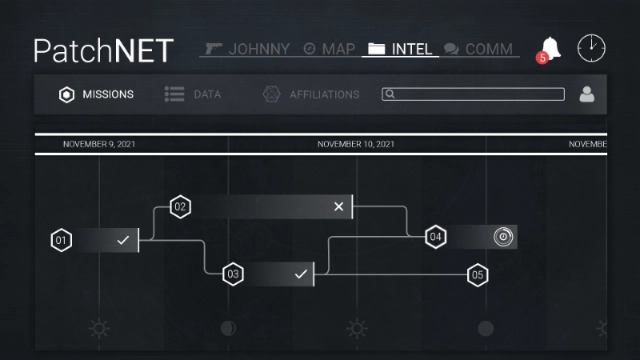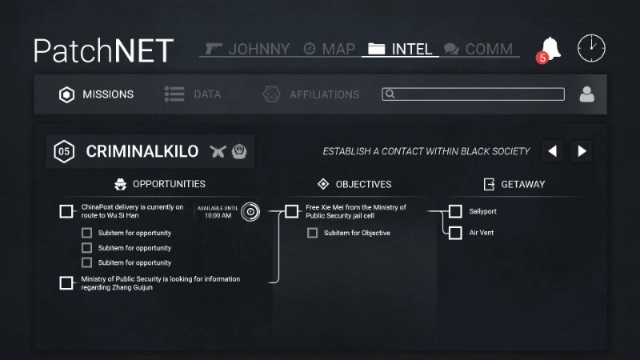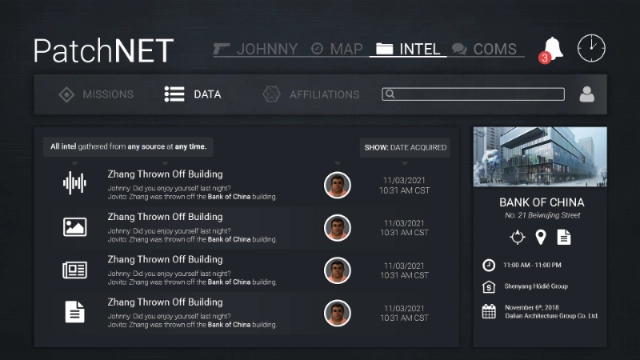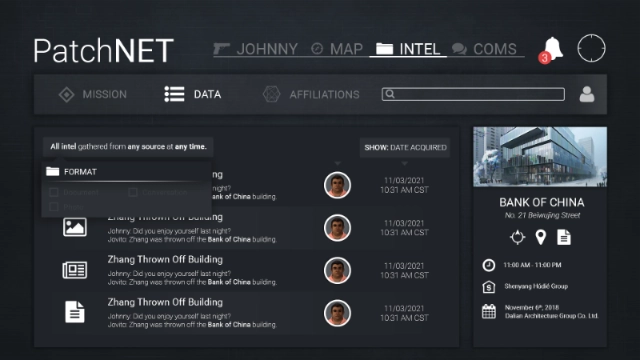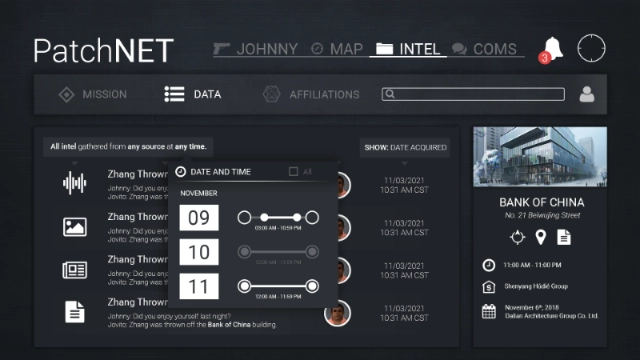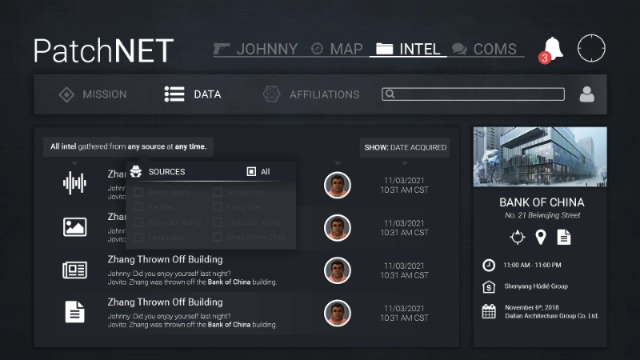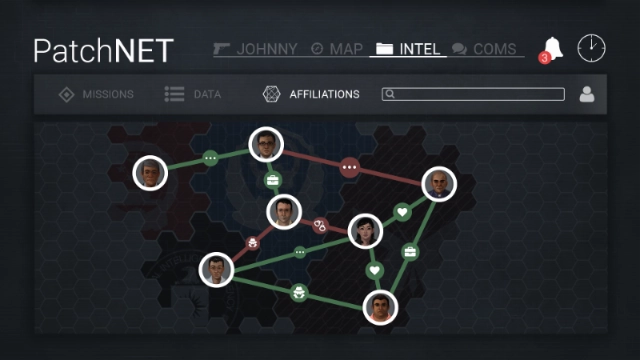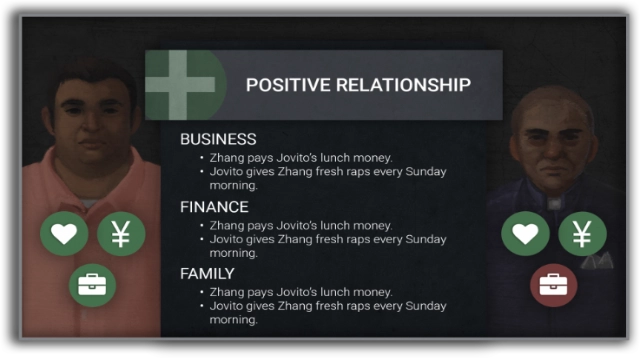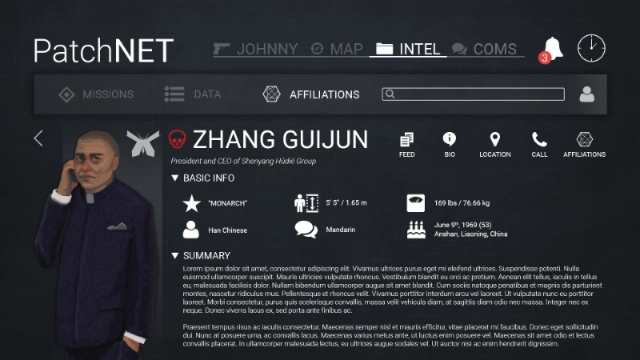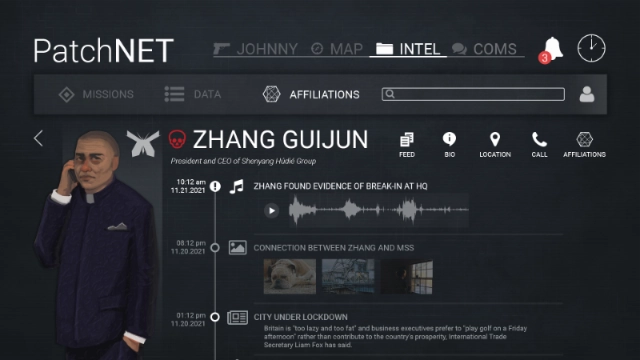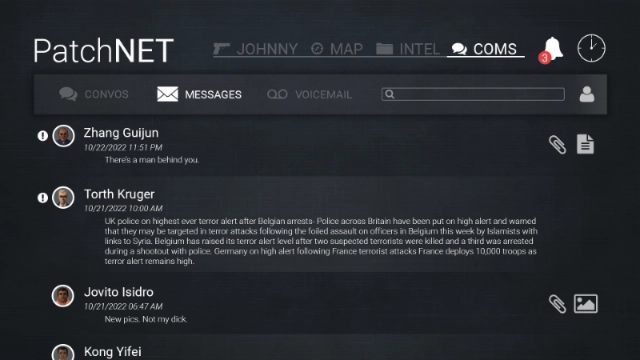Azentium
Table of Contents
overview
Based in near-future Shenyang, HUMINT thrusts the player in the middle of a dramatic regional political power struggle. As a CIA agent, the player seeks to traverse the city’s wilderness of mirrors and survive a spy ring bust spearheaded by the Ministry of State Security.
I primarily worked on production, UI/UX design, level design, and 3D modeling for HUMINT. I was involved in authoring and maintaining our development schedule and sprints to meet internal deadlines, as well as planning arrangements for events and overseas travel to China. I also organized and kept record of the daily stand-ups and weekly team-wide meetings. Additionally, I created and managed instances of Confluence, JIRA, MediaWiki, and FishEye on DigitalOcean to facilitate better communication, task management, and bug tracking.
Because of the themes and subject matter, designing the game’s UI presented a challenge: it needed to communicate a large volume of information quickly, without overwhelming the player. Moreover, both the main menu and in-game menu had to visually explore the dark, and often complex, work of spycraft.
HUMINT was a first-person adventure game slated for release on the PC in 2017; however, it was cancelled in late 2016. The text and some of the 2D artwork in the images below should be considered placeholder and not reflective of the final game. The character concept art was created by Shelley Monahan.
Tools (for UI): Photoshop, Illustrator, Unity (+ Unity UI), Balsamiq, Visio, Maya (3D Assets)
ui flow
wireframes
gameplay and mockups
main menu
(The main menu was themed to look like the darkened living room of a CIA safe house.)hud and loading screen
(Jovito’s Bar, as portrayed in the HUD screenshot, is an early prototype location made primarily with ProBuilder in Unity)patchnet (in-game menu)
inventory
map
intel // missions
intel // data
intel // affiliations
(Second image is a pop-up window when a relationship link is selected)intel // dossiers
communication
